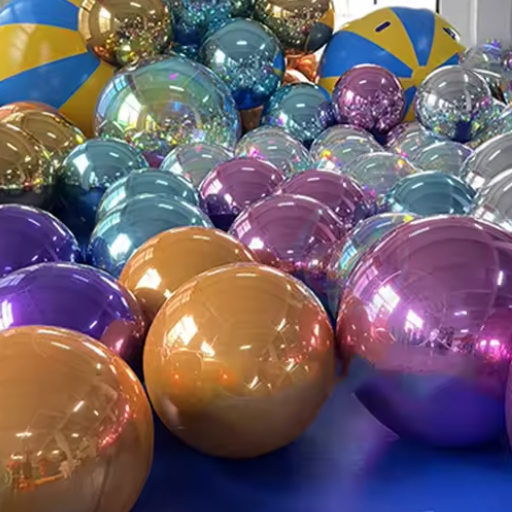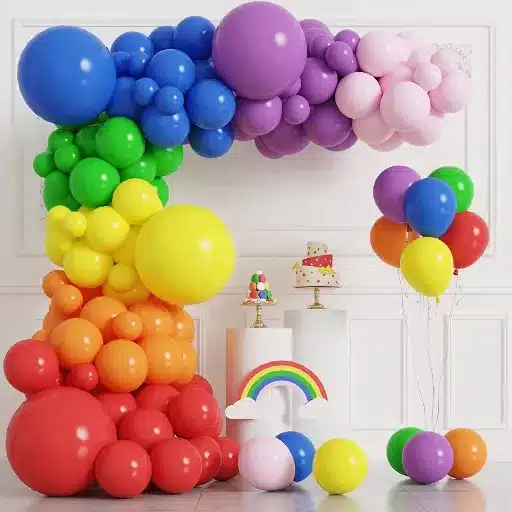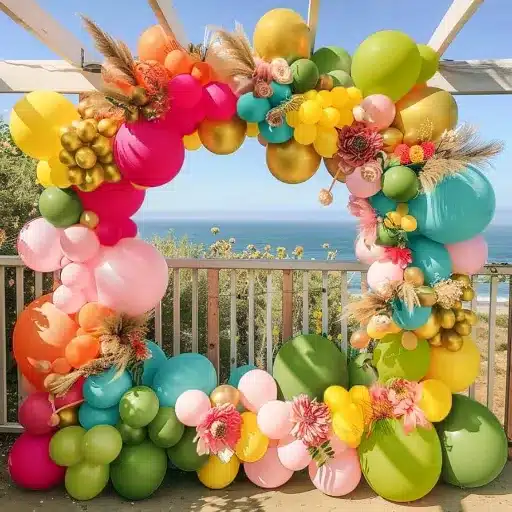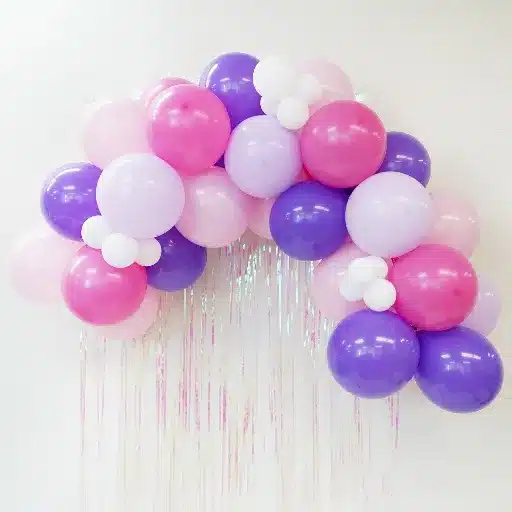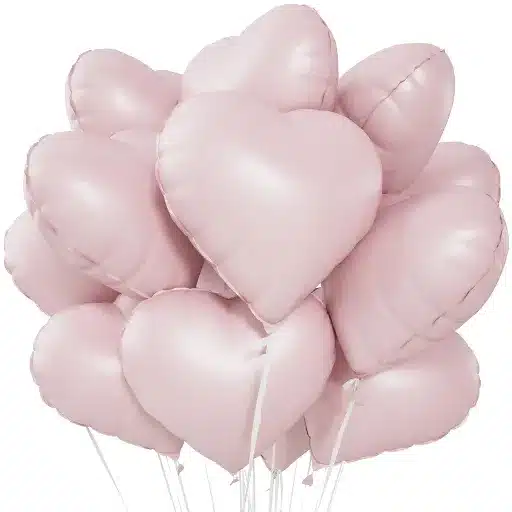An amazing thing happens when helium balloons float with mesmerizing grandeur in the air, earning them a place in celebration. But ever stopped to think about how long they stay afloat or what must have influenced their lifespan? Whether it is a birthday party, a wedding, or a special event, a little understanding of helium balloons is never a waste of time—for it always maximizes their float time.
This comprehensive guide will explore important areas regarding how long helium balloons stay inflated, factors affecting their longevity, and practical tips to keep your balloons looking festive longer. Let’s get ready to drift away and get into the wonderful world of helium balloons!
Introduction to Balloon Longevity
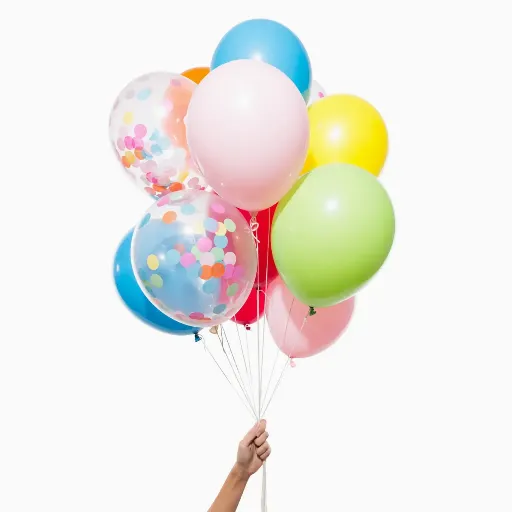
The lifespan of helium balloons basically depends on the type of balloon, quality of helium gas, and environmental conditions. Understanding these fundamentals is crucial for anyone planning events or decorations.
Quick Overview:
- Latex balloons: Usually float for 8 to 12 hours
- Foil balloons: May retain inflation for days or even weeks
- Key factors: Keep balloons away from heat and sharp objects
- Pro tip: Apply Hi-Float to latex balloons for extended float time
Why You Need to Know About Balloon Inflation Duration
Service providers with event decorations should know the duration of inflation to guarantee that the decorations will be alive and festive throughout the celebration. Here’s what you need to know:
| Balloon Type | Untreated Duration | With Treatment | Best Conditions |
|---|---|---|---|
| Latex Balloons | 8-12 hours | 2-3 days (with Hi-Float) | Room temperature, indoors |
| Foil/Mylar Balloons | 3-5 days | Up to weeks | Cool, dry environment |
Environmental Impact on Balloon Performance
Temperature, humidity, and altitude govern the functioning of helium balloons:
- High temperature: Helium gas expands, causing balloons to burst
- Cold temperature: Balloons shrink and lose buoyancy
- Room temperature: Optimal for longest balloon performance
Key Factors Affecting Balloon Life
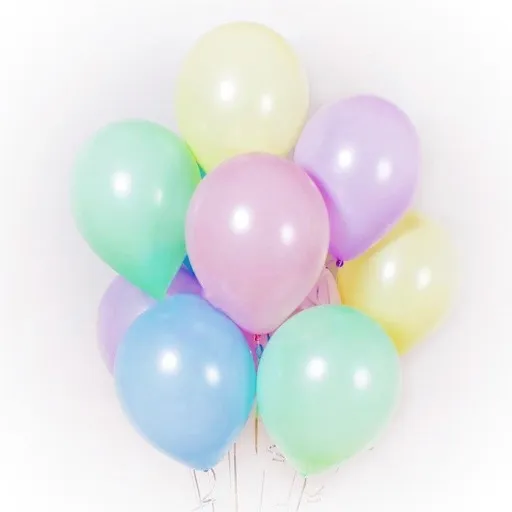
Understanding these critical factors will help you extend balloon lifetime and enhance their performance during events.
1. Material Type
The lifespan of latex balloons distinctly varies from that of foil balloons due to their structural characteristics:
Latex Balloons
- Composed of natural rubber
- Porous material allows gas escape
- Typical lifespan: 12-24 hours with helium
- Biodegradable and eco-friendly
Foil Balloons
- Made from less porous materials
- Retain helium for days to weeks
- Helium leakage is 4-5 times slower than latex
- Better for longer events
2. Gas Used
| Gas Type | Float Effect | Latex Duration | Foil Duration |
|---|---|---|---|
| Helium | Yes (lighter than air) | 8-12 hours | 3-5 days |
| Air | No floating | 5-7 days indoors | Several weeks |
3. Environmental Conditions
Temperature, humidity, and sunlight exposure significantly affect balloon lifespan:
- High Temperature Effects:
- Gas expansion inside balloons
- Increased risk of bursting
- Faster helium leakage
- Low Temperature Effects:
- Gas compression causes deflation
- Reduced buoyancy
- Material becomes brittle
- Sunlight Exposure:
- Accelerated helium leakage
- Color fading
- Material degradation
Types of Balloons and Their Lifespan
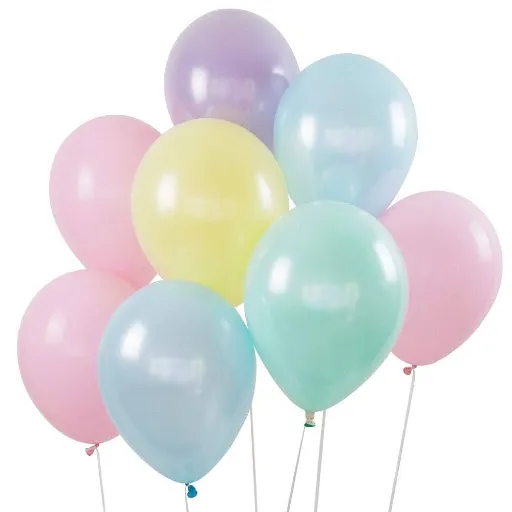
Latex Balloons: Duration and Characteristics
Latex balloons are among the most widely used balloons for decoration purposes. They are affordable, elastic, and eco-friendly, fabricated from natural rubber that biodegrades over time.
| Fill Type | Indoor Duration | Outdoor Duration | With Hi-Float Treatment |
|---|---|---|---|
| Air-filled | 12-48 hours | Variable | Not applicable |
| Helium-filled | 8-12 hours | 3-6 hours (direct sunlight) | Up to 24 hours |
Mylar Balloons: Inflation Longevity
Mylar balloons, also known as foil balloons, are famous for their glossy surface and superior shape retention compared to latex balloons.
Key Characteristics:
- Manufactured from non-porous metallic polyester film
- Much less permeable to gases
- Better retention of both helium and air
- Glossy, reflective surface ideal for printing designs
Performance Data:
- Helium-filled: 3-5 days typical, up to 2 weeks possible
- Air-filled: Several weeks without noticeable deflation
- With sealing spray: 20% increase in float time
- Indoor vs. outdoor: Maintain lift for 3-4 days indoors
Helium Balloons vs. Air-Filled Balloons
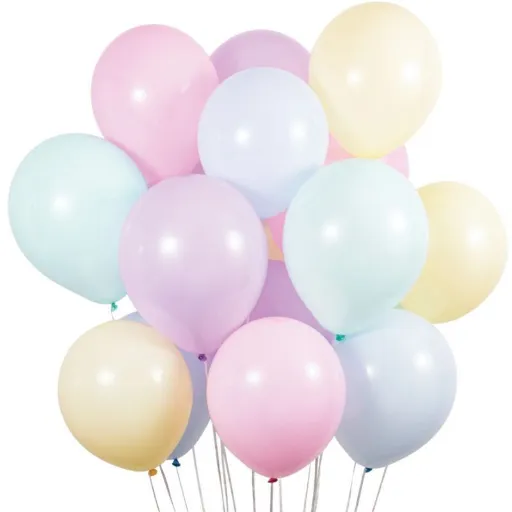
Understanding the differences between helium and air-filled balloons helps in making better decisions for your events.
| Aspect | Helium Balloons | Air-Filled Balloons |
|---|---|---|
| Buoyancy | Float naturally | No floating ability |
| Duration (Latex) | 12-24 hours | Up to several weeks |
| Duration (Mylar) | 2-5+ days | Several weeks |
| Cost | Higher (helium cost) | Lower (air is free) |
| Best Use | Floating displays, releases | Arches, garlands, floor decor |
| Environmental Impact | Uses finite helium resource | More environmentally friendly |
Environmental Factors: Temperature and Humidity Impact
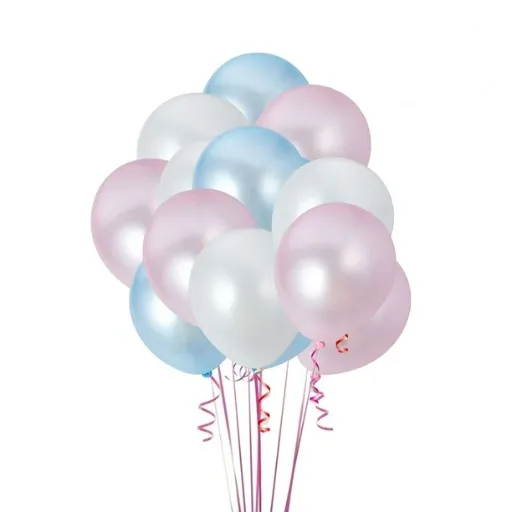
Temperature Effects
Humidity Effects
Research shows that untreated latex balloons subjected to 80% humidity at 86°F (30°C) degrade almost 50% faster than those in less humid environments.
- High Humidity on Latex: Moisture reacts with natural rubber, accelerating degradation
- High Humidity on Mylar: Resistant to moisture but may suffer adhesion problems with graphics
Optimal Storage Conditions
| Balloon Type | Temperature Range | Humidity Level | Additional Notes |
|---|---|---|---|
| Latex | 65-72°F (18-22°C) | Low humidity preferred | Avoid direct sunlight |
| Mylar | Room temperature | Less sensitive | Avoid sharp objects |
Tips for Increasing Balloon Life
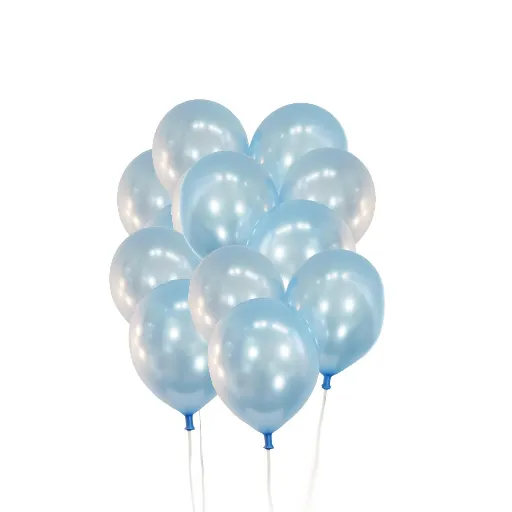
Proper Inflation Technique
Proper inflation technique plays a crucial role in maximizing balloon life expectancy and visual appeal.
Best Practices:
- Size Guidelines: Inflate latex balloons to recommended size on package
- Avoid Over-inflation: Prevents unnecessary strain and premature popping
- Use Proper Equipment: Utilize pumps or helium tanks with accurate pressure gauges
- Slow and Even Filling: Release gas gradually to avoid tearing
- Proper Sealing: Use tight knots for latex, heat-sealing for Mylar
Storage Tips
Before Use Storage
| Balloon Type | Storage Temperature | Storage Conditions | Shelf Life |
|---|---|---|---|
| Latex (uninflated) | 68-72°F (20-22°C) | Cool, dry area | 2-3 years |
| Mylar (uninflated) | Room temperature | Flat, sealed container | Several years |
Storage Guidelines:
- Latex Balloons:
- Store in cool, dry areas
- Avoid extreme temperatures
- Control humidity to prevent discoloration
- Keep away from sharp objects
- Mylar Balloons:
- Store flat to prevent creasing
- Keep in sealed bags or containers
- Avoid direct sunlight
- Maintain reflective properties
Real-World Applications
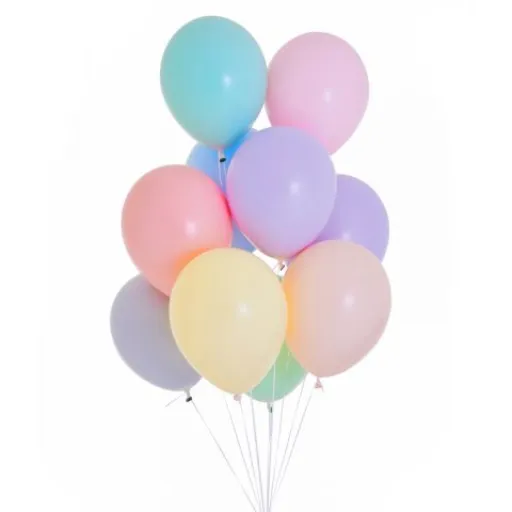
Selecting Balloons for Events and Decor
The right balloon choice can set the atmosphere and align with your event theme.
| Event Type | Recommended Balloon | Duration Needed | Special Considerations |
|---|---|---|---|
| Birthday Parties | Latex (cost-effective) | Few hours | Variety of colors available |
| Weddings | Mylar (elegant) | Full day+ | Metallic finish, custom printing |
| Corporate Events | Mylar (professional) | Multi-day | Logo printing, brand colors |
| Outdoor Events | Weighted arrangements | Variable | Weather-resistant options |
Popular Trends
- Oversized Balloons: 36-inch diameter for dramatic visual impact
- Eco-Friendly Options: 70% increase in searches for sustainable solutions
- Organic Garlands: Asymmetric, free-flowing installations
- Color Blocking: Adjacent or opposing color combinations
Creating Balloon Arches and Installations
Balloon arches and installations provide dramatic ways to beautify events, creating gorgeous focal points for entrances, stages, or photo opportunities.
Design and Planning
- Frame Materials: PVC pipes, metal, or pre-fabricated kits
- Balloon Quantity: 96-100 balloons for 8-foot tall arch
- Size Variety: Mix 5-inch, 11-inch, and 17-inch balloons for depth
- Attachment Methods: Tying, gluing, or using specialized strips
Current Installation Trends
- Organic Balloon Garlands: Natural, asymmetric cascading forms
- Textural Elements: Eucalyptus leaves, ribbons, fairy lights
- Color Blocking: Bold, contrasting color combinations
- Sustainable Options: Biodegradable latex, air-filled designs
Reference Sources
- Party On Butler Blog
- Title: “How Long Do Helium Balloons Last? Tips for Balloon Decor”
- Key Insight: Provides detailed information on the float time of helium balloons, including tips for extending their lifespan.
- Source: Party On Butler Blog
- West Michigan Balloons (TikTok)
- Title: “How far in advance should you blow up balloons? Air filled …”
- Key Insight: Discusses the longevity of air-filled balloon decor and best practices for storage.
- Source: West Michigan Balloons TikTok
- Balloonatics Party Shop
- Title: “How long does helium last in foil balloons?”
- Key Insight: Explains the lifespan of helium-filled latex and foil balloons, including the impact of using hi-float.
- Source: Balloonatics Party Shop
Frequently Asked Questions (FAQs)
How long do balloons stay inflated?
The duration depends on balloon type, material, and storage conditions. Latex balloons remain inflated for 12-24 hours with air, while helium-filled latex balloons float for 8-12 hours. Mylar balloons can stay inflated for 3-5 days with helium and several weeks with air.
What affects the longevity of latex balloons?
Several factors influence latex balloon longevity:
- Balloon size and material quality
- Environmental conditions (temperature, humidity)
- Direct sunlight exposure (UV rays cause oxidation)
- Storage conditions before and after inflation
How long do helium balloons float?
Helium balloon float times vary by material:
- Latex: 8-12 hours (up to 24 hours with Hi-Float)
- Mylar: 3-5 days (up to 2 weeks in ideal conditions)
- With treatments: Specialized coatings can extend float time significantly
How do I keep my balloons inflated longer?
To maximize balloon lifespan:
- Store in cool, shaded areas away from direct sunlight
- Avoid extreme temperatures (both hot and cold)
- Use Hi-Float treatment for latex helium balloons
- Proper inflation technique (don’t over-inflate)
- Choose appropriate balloon type for your event duration
Conclusion
Understanding balloon longevity is essential for successful event planning and decoration. By considering factors like material type, environmental conditions, and proper handling techniques, you can maximize your balloon displays’ impact and duration. Whether you choose latex for budget-friendly short-term events or Mylar for elegant long-lasting displays, proper knowledge ensures your celebrations remain vibrant and memorable.
Remember that the key to balloon success lies in matching the right balloon type to your specific needs, implementing proper inflation and storage techniques, and accounting for environmental factors that may affect performance. With these insights, you’re well-equipped to create stunning balloon displays that will float beautifully throughout your special events.

